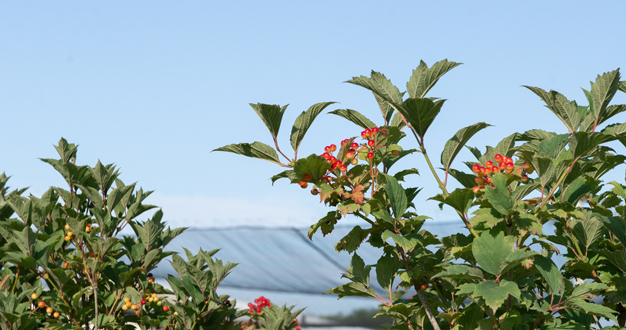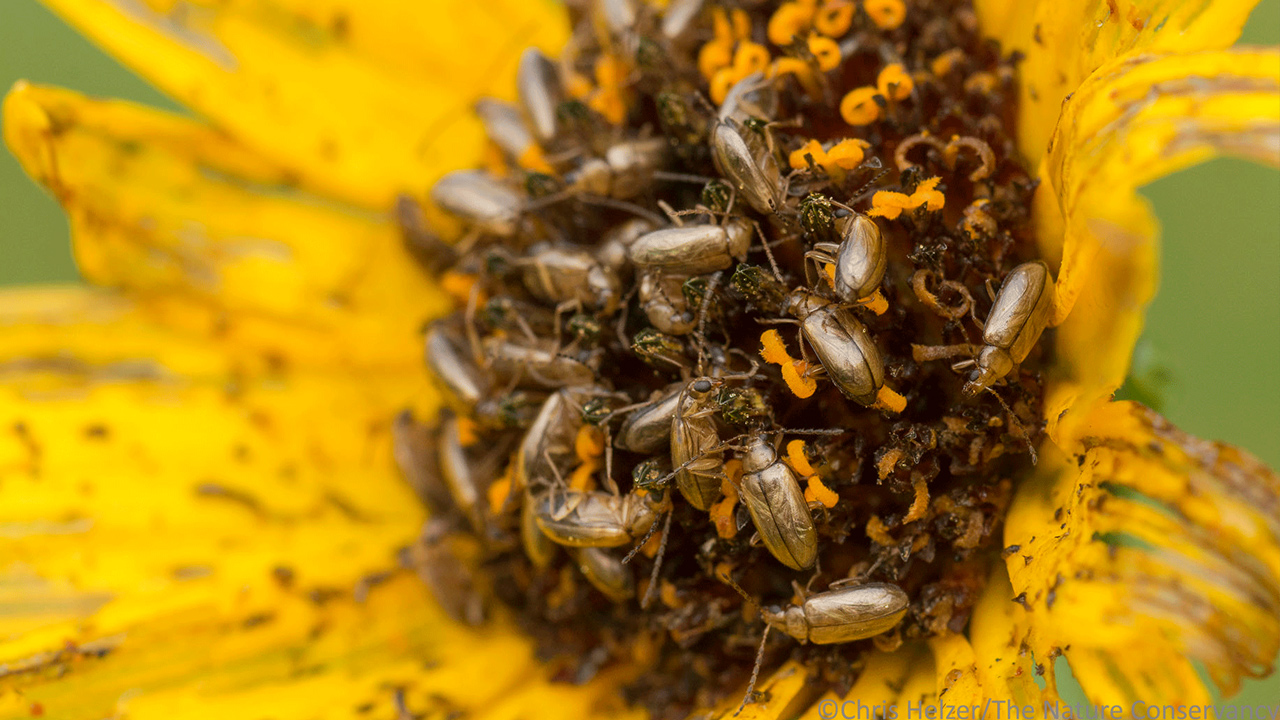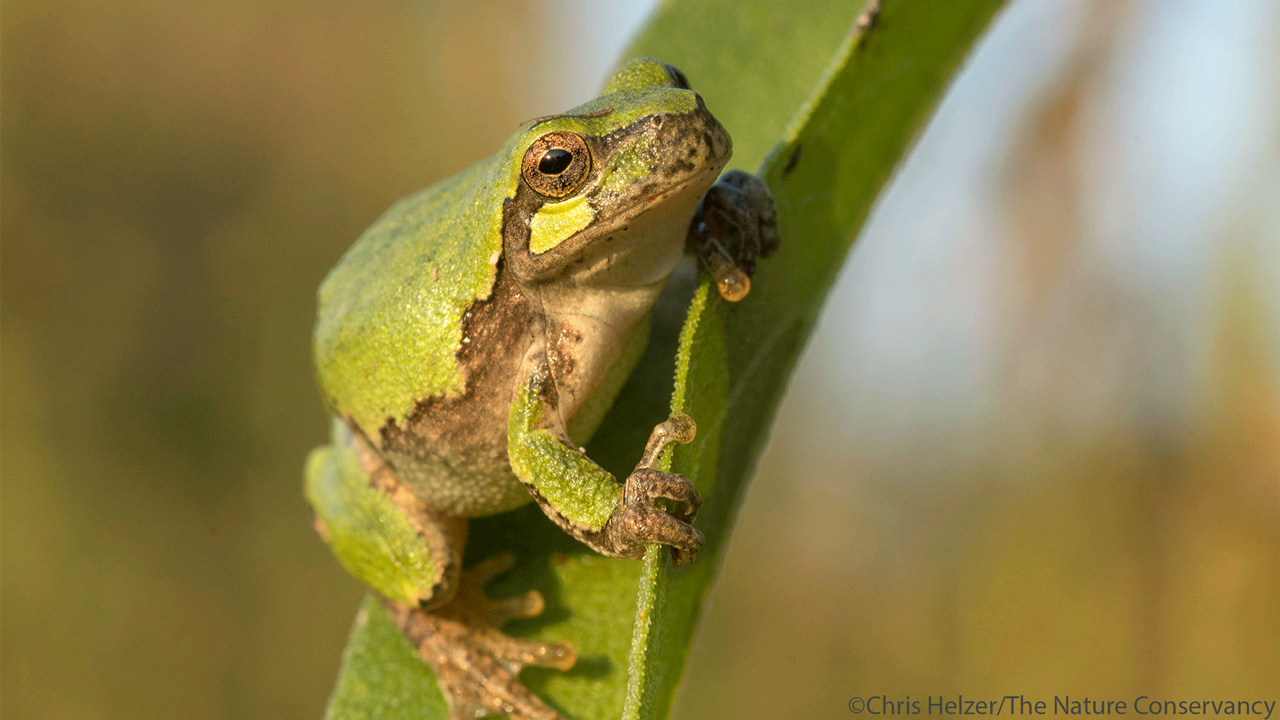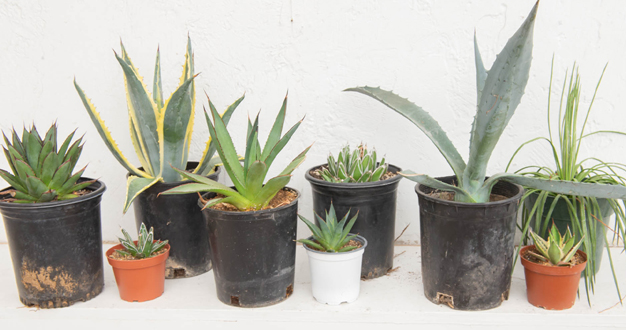
Chris Helzer is a passionate advocate for the prairie. And as The Nature Conservancy’s Director of Science in Nebraska, he shares that passion through his photography and writing. In January 2018, Chris selected a tiny plot – just one square meter – of restored prairie and committed a year to recording the diversity of life that populated this very small corner of the earth. What the project revealed was surprising, even to Chris – not just the plot’s dynamic community that changed throughout the year or even by the minute, but the impact it had on him personally.
Recently, Chris’s project became a published book – Hidden Prairie: Photographing Life in One Square Meter – featuring Chris’s beautiful photography and inspiring thoughts on his experiences. Here, we’re excited to share Chris’s original blog post in which he first described the astounding results of his square-meter project. Enjoy.

In January, 2018, I began a year-long project to photograph all the beauty and diversity I could find within a single square meter of prairie. That tiny plot is located in a narrow strip of restored grassland at Lincoln Creek Prairie in Aurora, Nebraska. The prairie was restored by Prairie Plains Resource Institute in the early 1980’s and contains a nice diversity of prairie plants.
My initial motivation for this project was to draw awareness and appreciation to prairie communities. Prairies suffer from a massive lack of attention and respect from the general public, and that provides a major handicap to those of us advocating for their conservation. That disinterest is true even in a state like Nebraska, where about half of the state is still grassland – including the spectacular Nebraska Sandhills – and where almost no one lives more than an hour’s drive from a prairie.
“Apart from the impressive biological diversity I observed, I was also stirred by how much beauty I discovered within the confines of a square meter of prairie.”

While I primarily started the project as a way to help others discover prairies and their beauty, the journey has also affected me personally, in ways I hadn’t fully anticipated. I have always been drawn to photograph flowers, bugs, and other tiny creatures, but I usually do so while wandering broadly through prairies, looking for subjects that draw my attention. Despite more than 25 years of studying and exploring prairies, forcing myself to sit down and really focus my eyes and camera within a tiny square space has been truly inspirational.
When I first came up with this project idea, I figured I would get frustrated by sitting in one place for long periods of time and missing out on potential photo opportunities elsewhere. After all, beautiful photography light is fleeting and precious. In actuality, the opposite happened. I found myself wandering with my camera through gorgeous landscapes of prairies, feeling distracted and unsettled, wondering what was happening back in my little plot. The only frustration I felt while at my plot came whenever a butterfly or other small creature left the square before I could photograph it.

I honestly don’t think I ever visited my plot without seeing something I hadn’t seen there before. The number of species I found was astounding, even as someone who studies and touts the diversity of prairies. I could put together an impressive photo portfolio consisting only of the various fly species of flies I photographed. I also became engrossed by the growth and survival of individual plants, and felt emotionally affected when all four stiff sunflower blossoms in my plot were attacked by swarms of tiny beetles as soon as they opened. Most of all, the rhythms and patterns of prairie life became more apparent to me than they ever had been before. I became intently aware of what was blooming, what was about to bloom, which tiny creatures had newly emerged on the scene, and who was eating whom as a result.
“I found myself wandering with my camera through gorgeous landscapes of prairies, feeling distracted and unsettled, wondering what was happening back in my little plot.”

Apart from the impressive biological diversity I observed, I was also stirred by how much beauty I discovered within the confines of a square meter of prairie. I photographed a lot of flowers from a lot of angles, but I also found myself admiring the graceful downward curve of Maximilian sunflower leaves, the colorful feathery anthers of grasses, and the glowing backlit patterns of leaf venation. The realm of what deserved my attention as a photographer got much bigger, despite working within a tiny area.
I was already knowledgeable and passionate about prairies before starting this project, but I was still deeply moved and inspired by what I found within a single square meter. Far from the drab patches of grass many people imagine them to be, prairies are vibrant and dynamic ecological communities, consisting of complex webs of interacting organisms. There is abundant beauty in prairies, and while you might have to look closely to see some aspects of it, you also don’t have to go far to find it. I hope this project helps inspire people to explore prairies near them, and to help ensure that prairie ecosystems remain diverse and healthy well into the future.

By the end of the year-long project, Chris photographed 113 different species of plants and animals within his one-square-meter plot. That includes 15 plant species, 22 different flies, 18 beetles, and 14 bees. To see more photos from the project, be sure to visit his original blog post – or check out his new book.


